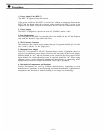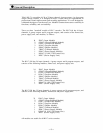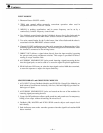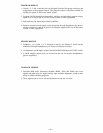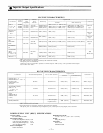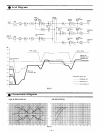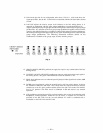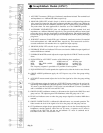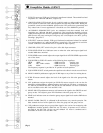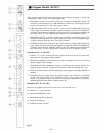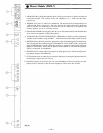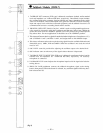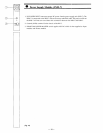
1. XLR type INPUT connector is balanced, transformer-isolated and accepts low impedance
sources from -60dB to +10dB. Proper adjustment of both the INPUT LEVEL Switch and
TRIM Knob make it possible to provide the optimum setting for each input.
2. GROUND (GND) LIFT Switch is for Pin 1, which makes it easy to avoid ground loops
that are often caused in connection with other equipment and that may induce hum noise.
Sliding the ground lift switch from the NORMAL position to the LIFT position cuts
ground loops and may reduce hum noise. For most applications it should be set to the
NORMAL position.
3. ACCESSORY SEND/RECEIVE (ACCESSORY) jacks are unbalanced with an impedance
of 10k ohms and a nominal level of +4dB. These jacks allow inserting signal processing
devices into the signal path. The regular signal path is interrupted at the RCV jack by
inserting a plug into it.
4. DIRECT OUT jack is unbalanced with an impedance of 10k ohms and a nominal level of
+4dB. The jack delivers the signal prior to the pan pot and bus assign switches.
5. PHANTOM power switch permits the user to supply 48V DC through the input connector
to a condensor microphone. If phantom power is required, the phantom power master
switch on the rear panel of the Power Supply Module must be ON before the phantom
power switch on each Input Module is turned ON.
6. PHASE switch reverses the polarity of the incoming audio signal. At "N" (normal)
position, Pin No. 3 of the XLR connector is hot and Pin No. 2 is low. At the "R" (reverse)
position, Pin No. 2 is hot. Slide the phase switch to the appropriate position to match the
polarity of the source. Polarity can often be intentionally reversed to eliminate leakage
from adjacent microphones or to create special acoustic effects.
7. INPUT LEVEL switch has 3 settings, -60dB, -40dB and -20dB at the "0" position of the
TRIM knob. Adjust the input level switch, depending on the output level of microphones
or associated equipment.
8. TRIM knob varies the gain of a head-amplifier and provides a continuously variable
control of gain in the range of 0 to —30dB from the input level switch position. It permits
optimum setting of the input channel gain and provides good S/N ratio when used in
conjunction with the INPUT LEVEL switch. Another use of the trim knob is to allow
every input fader to be in a horizontally straight line with proper adjustment of the trim
knob.
9. EQUALIZER consists of three frequency ranges. The HIGH and LOW shelving type
equalizers provide 15dB of boost and attenuation at 10kHz and l00Hz, respectively. The
MID equalizer employs peaking type equalization which provides 15dB boost and
attenuation. The MID-EQ center frequency can be easily set at any frequency between
200Hz and 5kHz by use of a continuously variable frequency setting knob. The "0"
position of each equalizer provides flat response.
10. EQUALIZER IN/OUT switch puts the input signal either in circuit or out of circuit of the
equalizer. The OUT position provides flat response no matter what the position of the EQ
controls.
11. HIGH PASS filter switch provides flat response when OFF, but can be set to cut the
frequency response either below 60Hz or below 120Hz at a 12dB/octave rate.
12. FOLDBACK knobs provide for two independent foldback mixes. The No. 1 foldback knob
mixes the signal pre-fader, but the No. 2 foldback knob is associated with the Pre-Post
fader selector switch which permits its mix to be either Pre or Post fader.
Input Module (IPM-7)
(Fig.
3)
— 9 —




